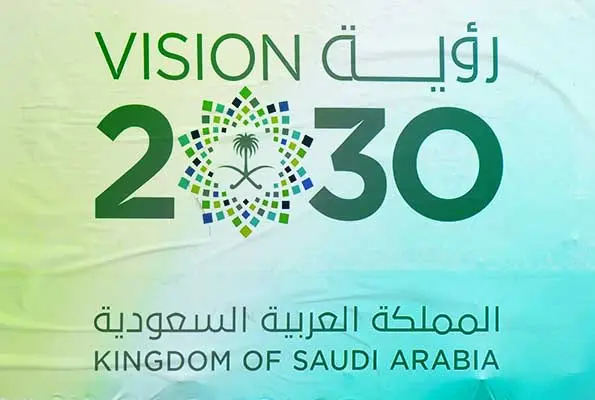Saudi Arabia has embarked on an ambitious mega-project in Riyadh – the King Salman International Airport (KSIA) – slated to become one of the world’s largest airports by 2030. This expansion of the existing airport (formerly King Khalid International) exemplifies the scale of Saudi Vision 2030’s infrastructure drive. Spanning tens of square kilometres and integrating cutting-edge design and sustainability, KSIA is envisioned as a global logistics and tourism hub for the Kingdom.
Unprecedented Scale And Vision
The planned scale of KSIA is staggering. The new airport will cover approximately 57 square kilometres, incorporating six parallel runways and multiple terminals (including the site’s existing terminals). By its 2030 completion, it aims to accommodate up to 120 million passengers annually – a capacity that would put it at the forefront globally. For context, no airport today handles much over 100 million passengers a year.
By 2050, further expansions target 185 million passengers and 3.5 million tons of cargo per year. This unprecedented capacity aligns with Saudi Arabia’s broader Vision 2030 goals: diversifying the economy and making Riyadh a top-tier global city.
“We are committed to delivering an airport which will be seen as the benchmark in the world of aviation… providing the connectivity Riyadh needs to meet the business, trade, and tourism growth set out in Vision 2030,” said KSIA’s acting CEO. In short, KSIA is a pillar of “Vision 2030,” intended as an economic engine that transforms Riyadh into a global air travel crossroads.
The King Salman International Airport will have an approximate footprint of 57 square kilometres, featuring six parallel runways, classifying it as a massive “aerotropolis” in scale. It will incorporate seven terminals, including existing ones and new additions, with dedicated facilities for commercial, low-cost, and private aviation.
By 2030, the airport aims to achieve a passenger capacity of 120 million per year, with further growth projected to 185 million by 2050. This project aligns with Saudi Arabia’s Vision 2030 strategy, which seeks to rank Riyadh among the top 10 city economies and boost non-oil sectors such as logistics and tourism.
Innovative Design And Sustainability
Designed by Foster + Partners, the airport’s architecture is both innovative and rooted in the local context. A signature element is the “Wadi Loop,” a green landscaped corridor linking the terminals and developments across the vast site. This wadi-inspired green space weaves through the airport city, making it easy for travellers to move between terminals, hotels, and retail areas amid lush surroundings.
The main terminal’s design draws on natural elements and Saudi heritage – featuring expansive windows with views of the desert environment, giving travellers an immediate sense of place upon arrival. Movement through the terminal will be “seamless and intuitive” by design, with clear wayfinding and minimal level changes.
Sustainability is at the core of KSIA’s design and operations. The airport is being built to LEED Platinum standards, incorporating “cutting-edge green initiatives” to minimise both embodied carbon (from construction materials) and operational carbon footprint. For example, the terminals will utilise natural ventilation and climate-controlled lighting to reduce energy use while keeping passengers comfortable.
The entire complex will be powered by renewable energy sources, aligning with Saudi Arabia’s push for clean energy adoption. The project’s managers have pledged to integrate innovative sustainable practices at every stage, from design through construction and operation.
Notably, the new terminals will strive for zero or minimal carbon emissions and resource waste, befitting an airport of the future. The ambition is not only to build the largest airport, but also one of the greenest and most technologically advanced in the world.
A Global Hub For Travel And Trade
Crucially, King Salman International Airport is envisioned as a driver of Saudi Arabia’s emergence as a global hub for logistics, business travel, and tourism. Its strategic location and sheer capacity are meant to make Riyadh a natural bridge between East and West for air travel.
Under “Vision 2030,” Saudi Arabia aims to exponentially grow visitor numbers and transit traffic – the airport will facilitate this by offering world-class connectivity. Riyadh’s upcoming new flagship airline, Riyadh Air, is expected to base its operations at KSIA, leveraging the hub to compete with other Gulf carriers in connecting international routes. With six runways and modern facilities, Riyadh can serve as an alternate routing for global air traffic, easing pressure on traditional hubs.
The airport project also integrates an “airport city” concept: beyond just flights, the area will host residential districts, hotels, shopping, entertainment, and logistics zones. This reflects the “aerotropolis” model, turning the airport into a destination in itself for both passengers and local residents.
About 12 km² of the site is allocated to non-aeronautical development: offices, recreational parks, and retail, generating economic activity and jobs. Such diversification of use is aimed at stimulating non-oil economic growth, a cornerstone of Vision 2030.
Saudi authorities stress that the new airport will “stimulate transport, trade, and tourism” nationwide. By enabling 100-plus million travellers to easily enter or transit Saudi Arabia, KSIA supports the Kingdom’s goal to attract more tourists and business visitors.
In parallel, cargo capacity will expand significantly, positioning Riyadh as a regional logistics hub for freight movement. The economic impact is enormous: tens of thousands of jobs during construction and operation, and a boost to industries from hospitality to retail.
In sum, King Salman International Airport is not just an infrastructure project, but a linchpin in Saudi Arabia’s transformation agenda – marrying ambitious scale with innovative design and sustainable engineering to create a truly global aviation hub.



